
by Krista | Jun 8, 2010 | Spring
The sun was blazing hot as we emerged from the gorgeous Bosnian mountains and wended our way through the battle-scarred valley to the city of Mostar.
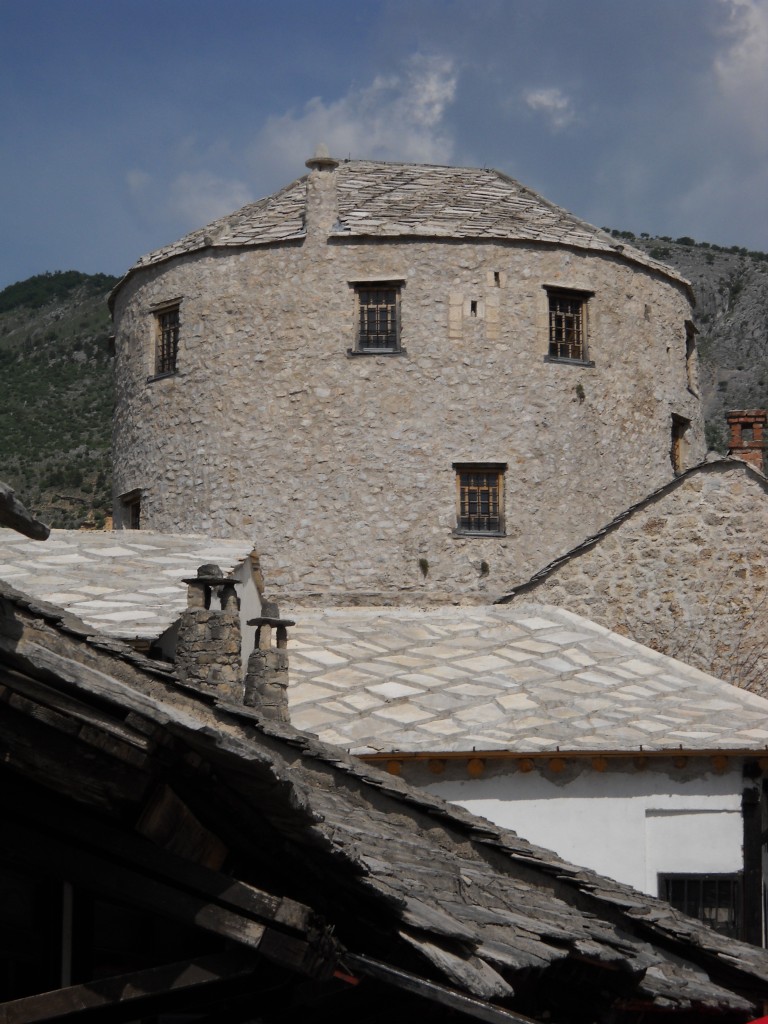
Wanting to explore the old town and see the bridge we’d read so much about, we stopped a man by the side of the road to ask directions. Not only did he give us directions, he offered his services as our guide and historian. An offer we gladly accepted.
He led us from the sun-baked asphalt onto the stone streets of Old Town Mostar, my sandal clad feet slipping precariously on the stones worn smooth as glass.
Captivated by the beauty of our drive through the Bosnian countryside that day, we had completely forgotten to stop for meals and were positively ravenous and utterly parched! Our guide immediately took us to a restaurant featuring traditional Bosnian fare. I knew I wanted to eat there as soon as I saw we’d be eating under a flowered arbor, next to a gurgling fountain, and that we got to cross this exquisite carpet to gain entrance.
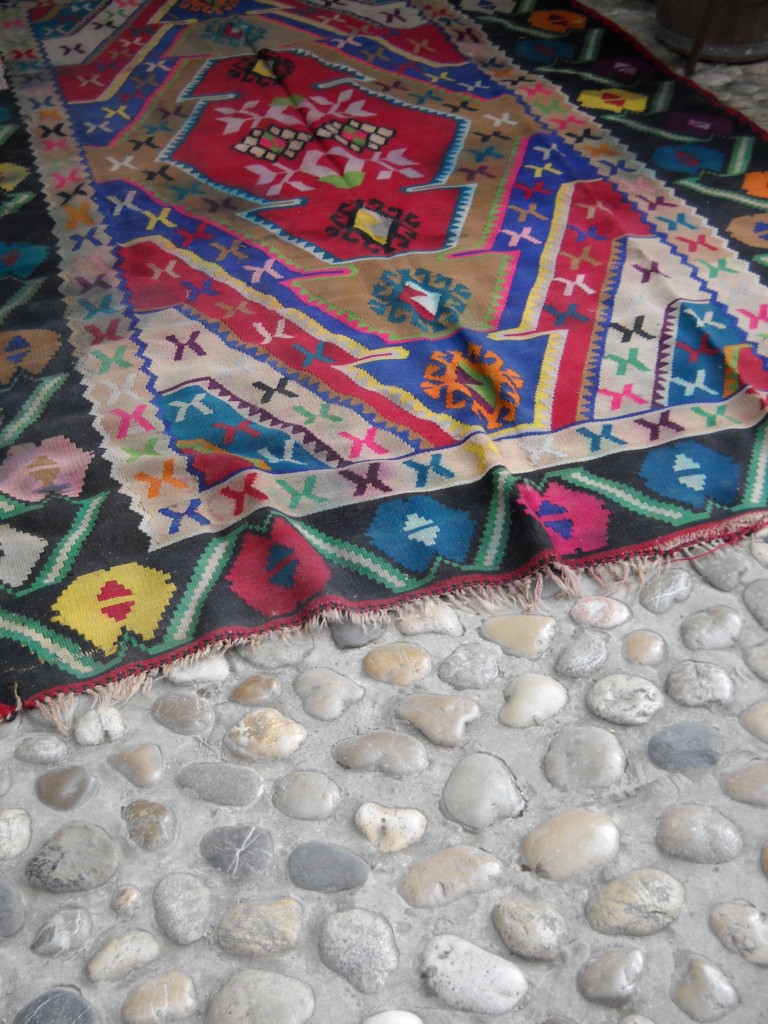
We had scarcely taken our seats when we were visited by the restaurant cat.
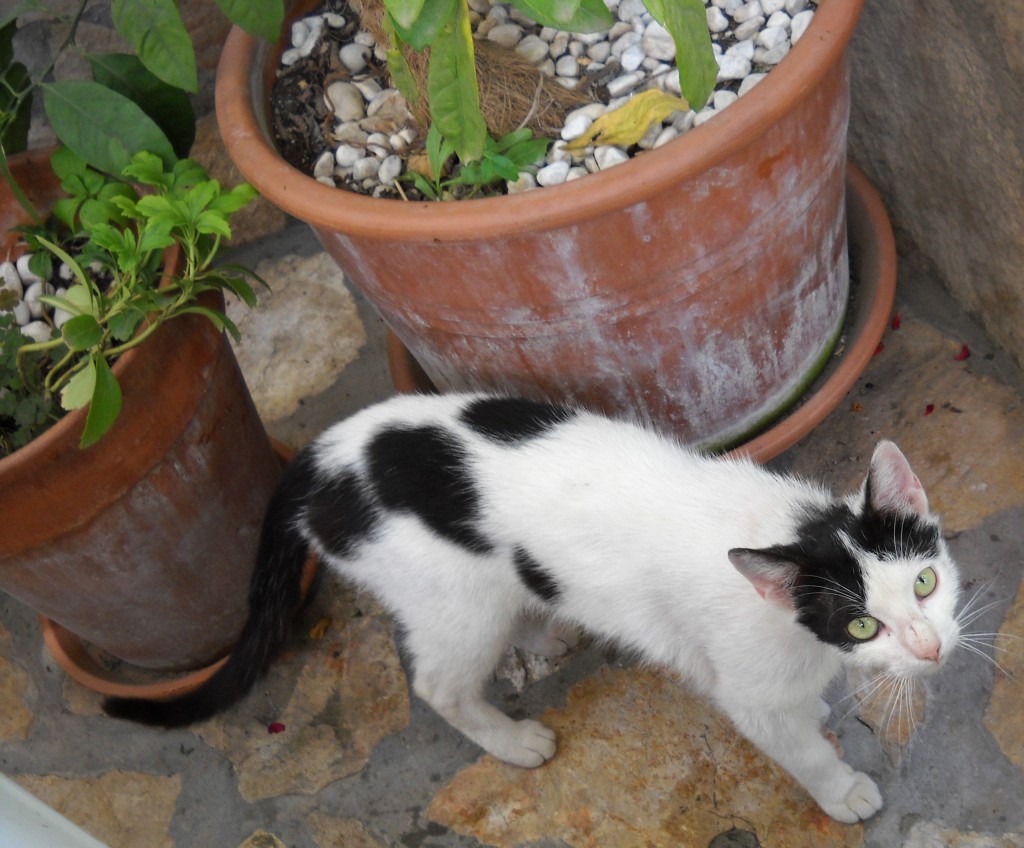
Too hot and thirsty to even think of food, we hastily ordered mineral water and flat water and guzzled to our heart’s content.
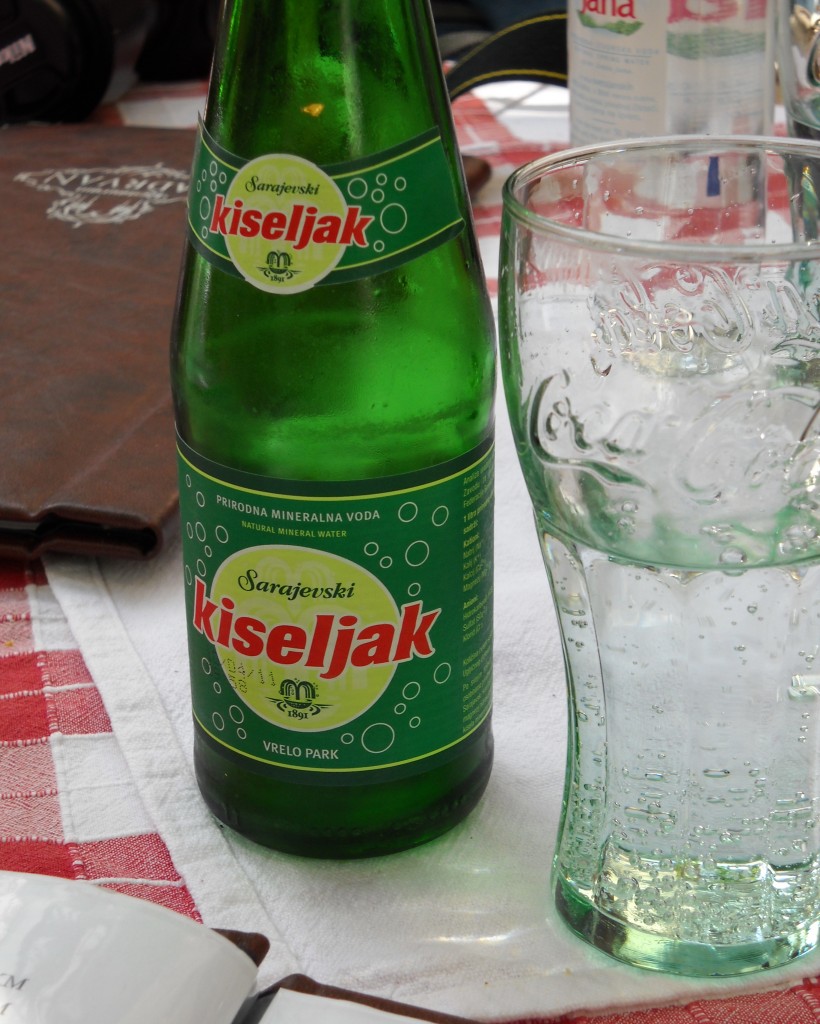
My brother Ryan went for a massive platter of grilled cevapi, sausages, and other meats, grilled eggplant and mushrooms, cabbage salad, tomato salad, French fries, and ajvar, that wonderful roasted vegetable condiment beloved from Germany down through the Balkans.
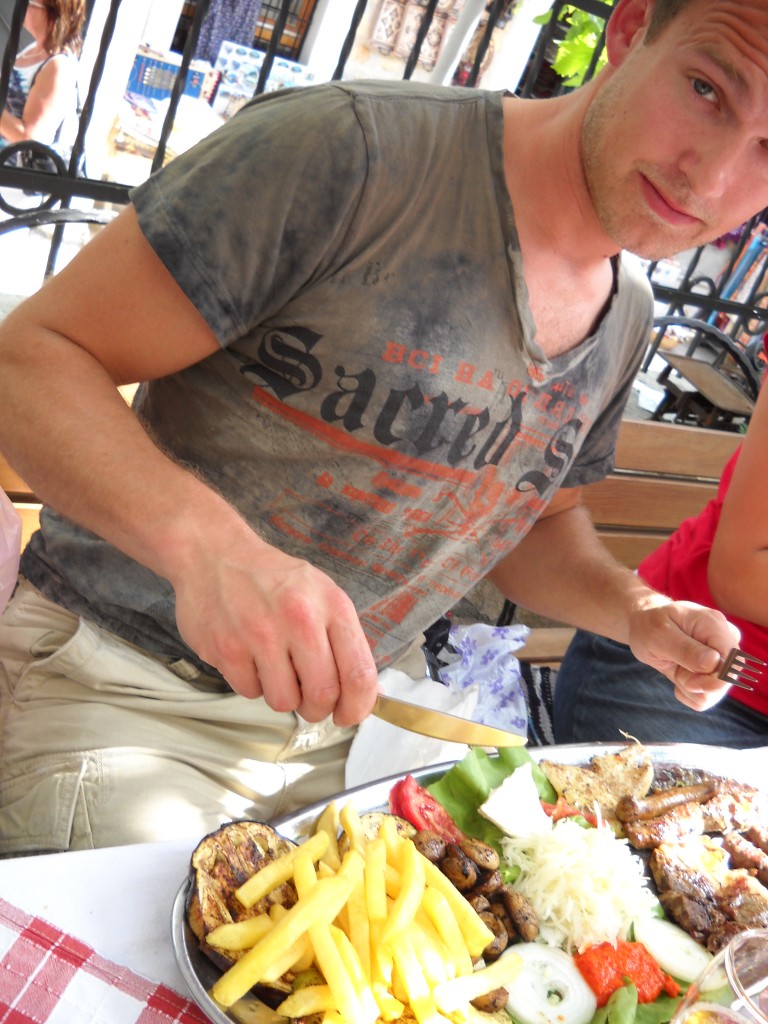
I tucked into a cool and refreshing tomato onion salad followed by wonderfully greasy sausages dipped in mustard, and savory roasted potatoes.
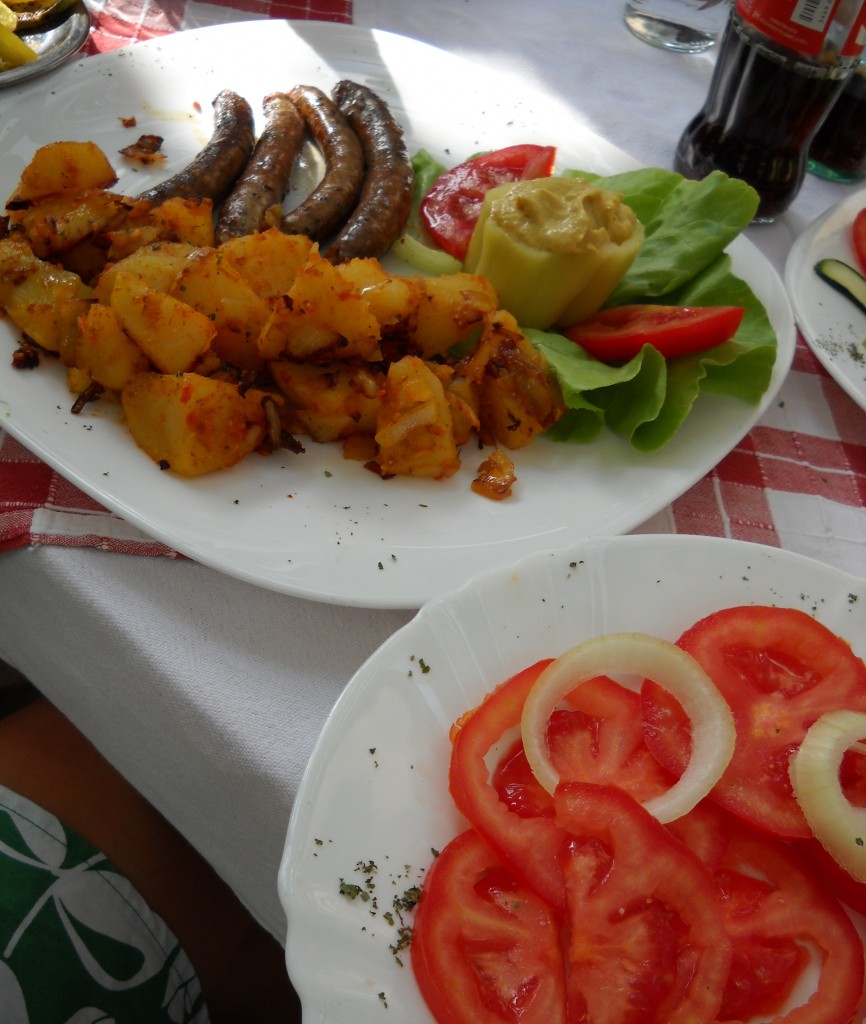
Although we had no room left for dessert, I’ve since learned that Bosnians prefer fresh fruit or simple plain cake for their after dinner treat. In their honor I dined on fresh cherries this week.
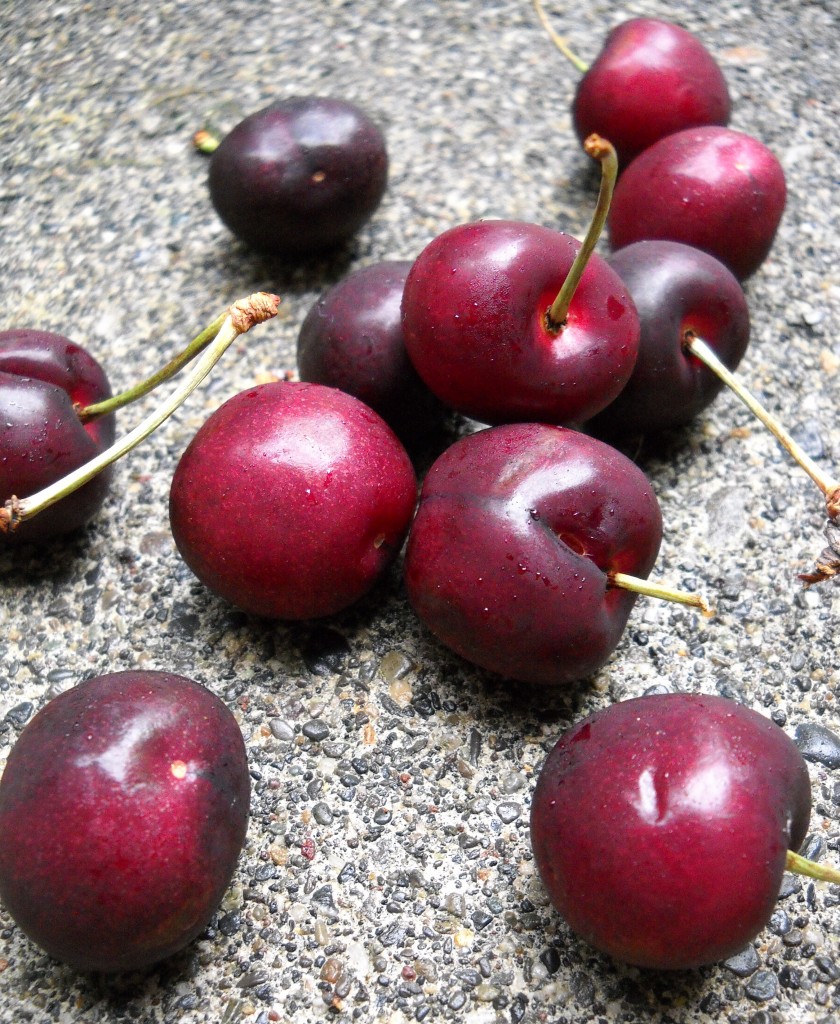
What is your favorite dessert?

by Krista | Jun 1, 2010 | Gulliver Tuesday
Before traversing the gorgeous, fairytale Bosnian countryside, my imaginings of Bosnia consisted of the horrific images of burning buildings and massacres flickering across television screens in the early 90’s. Thus far we had seen little evidence of those tragedies, but as we drew closer to the city of Mostar the pristine mountains and clear rivers gave way to bullet-ridden churches, crumbling ruins of bombed homes, store fronts marred with scars from mortar rounds.
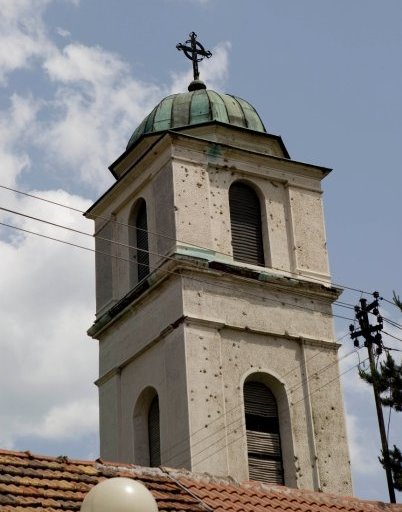
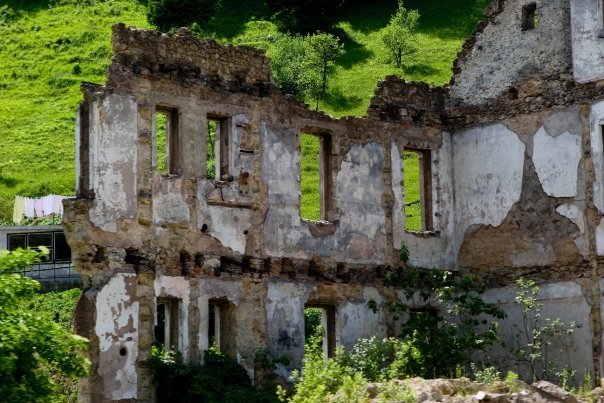
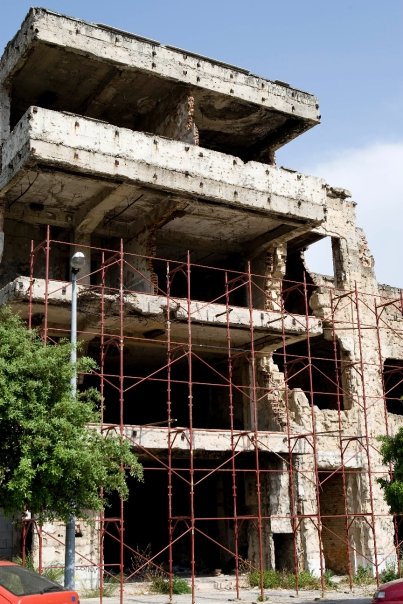
One three story home caught my eye. The bottom and top floors were completely gutted, shattered by artillery of some kind, but the middle floor was mostly intact and there was laundry billowing in the warm spring winds.
What horrors had these people lived through? Where do you go when your homes, offices and churches are being fired on? How do you start rebuilding when the war finally ends after four long years? What manner of person comes home to a bombed out house and immediately sets about making it homey again by stringing laundry, cooking dinner? I fuss when my power goes out or the hot water is gone, yet this person had an entire wall missing and used it as the ideal place to catch a breeze to dry their laundry.
I am grateful for my intact walls today.
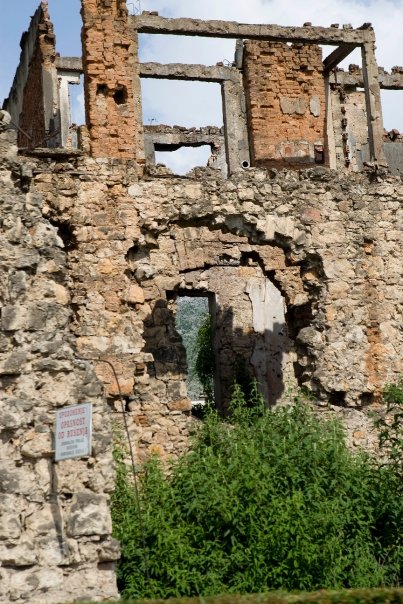
We entered Mostar mid-afternoon, wending our way towards the Old Town when we turned a corner and saw the remains of a synagogue. The walls were riddled with pockmarks left by thousands of bullets. It is closed now, the windows bricked up, the courtyard overgrown with weeds. I wished I could see laundry billowing from a balcony.
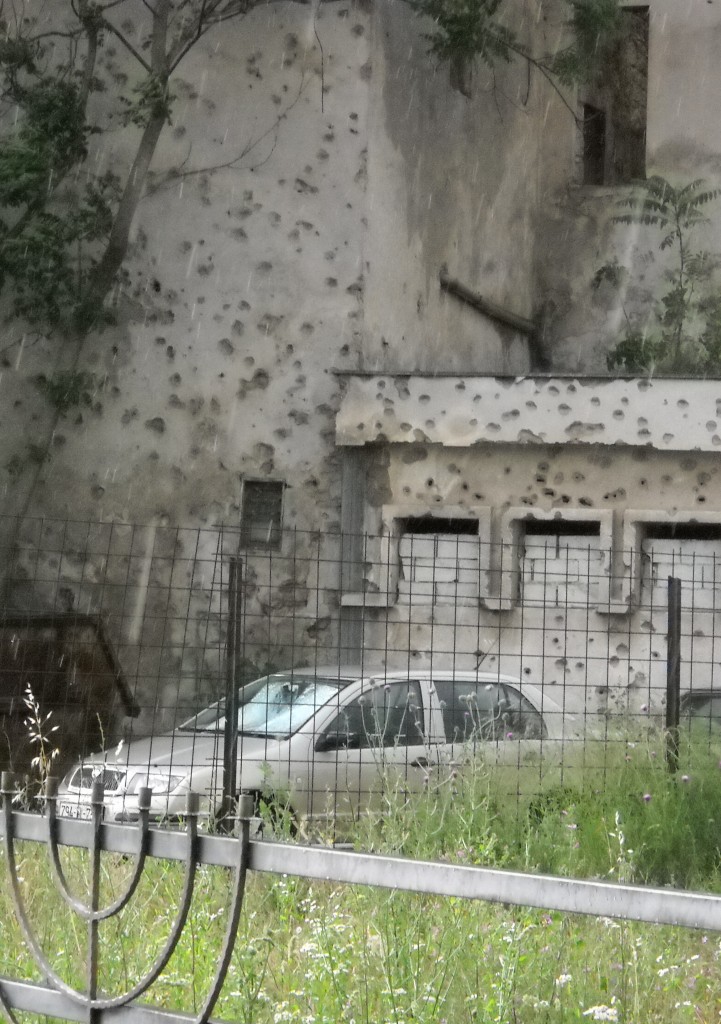
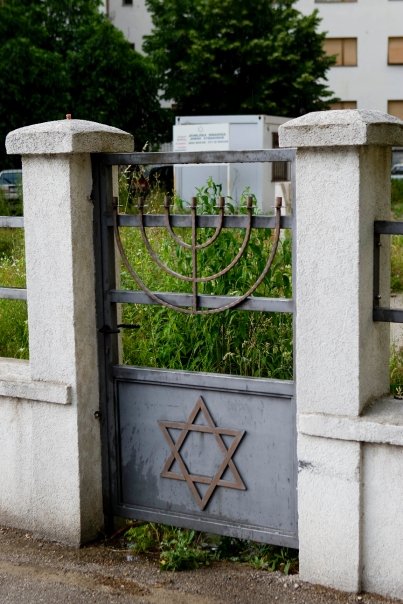
Here and there were signs of hope, life, and renewal as Bosnians mended broken houses of worship, restored shattered homes, and raised new buildings where old ones could not be redeemed. It was peaceful, calm, but I felt anxious somehow, wondering if that same mending and restoration could heal the families and communities shattered by that devastating conflict. I hope so.
Next week I’ll take you to wonderful Old Town Mostar with the delightful self-appointed guide we found in a parking lot. 🙂

by Krista | May 25, 2010 | Spring
Good morning! Before we continue on our jaunt through Bosnia, I want to stop for a moment and say HAPPY BIRTHDAY to my Dad. Happy Birthday, Pa! I love you muchly and am so glad you’re my friend. 🙂
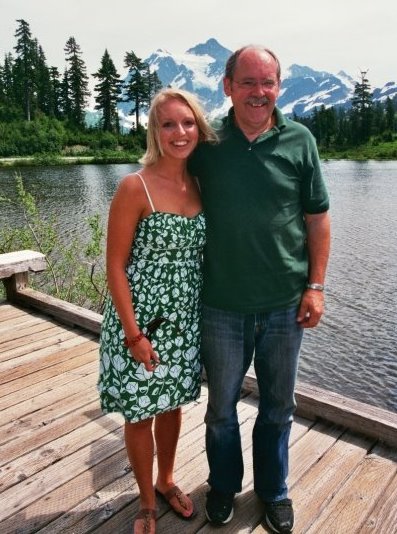
Now…back to Bosnia!
After wending our way past this idyllic lake…
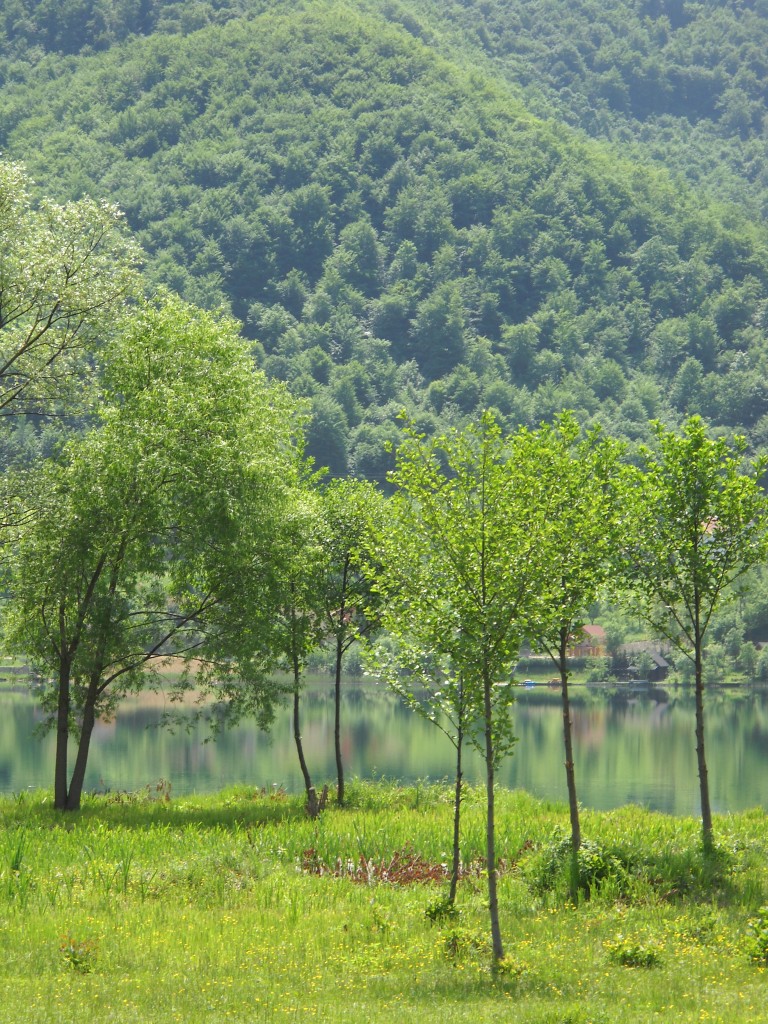
…and through fairytale mountains…we emerged into a valley and began driving through beautiful little villages clustered along the riverbank.
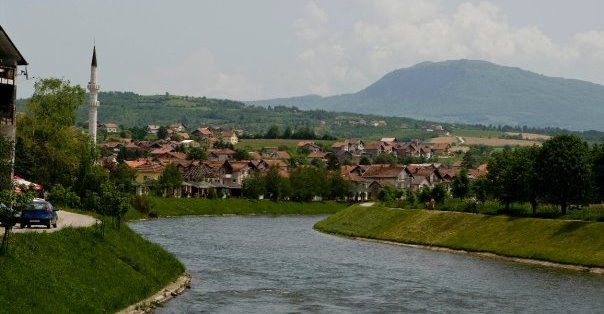
So many things entranced me about the towns we passed: the tidy gardens being readied for spring, farmers pitching hay onto towering stacks, the abundance of balconies festooned with flowers or laundry billowing in the breeze.
Today I’m just going to feature rooftops. They were so fascinating to me! So new, mysterious and exotic. I love how architecture reflects a culture so vividly.
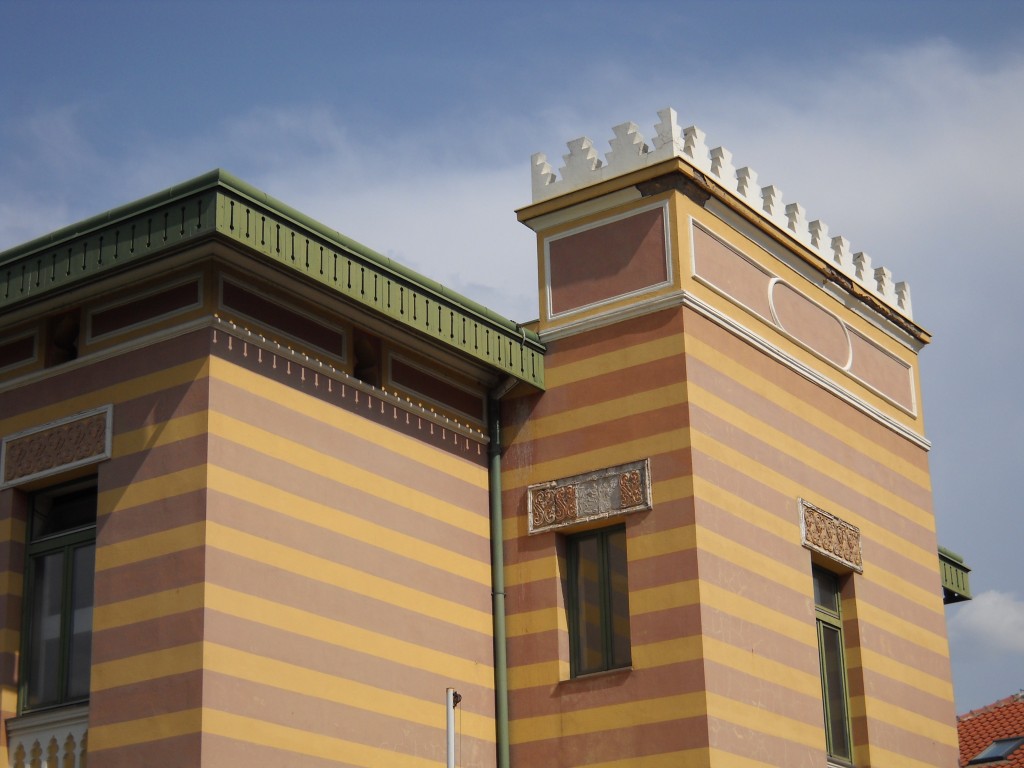
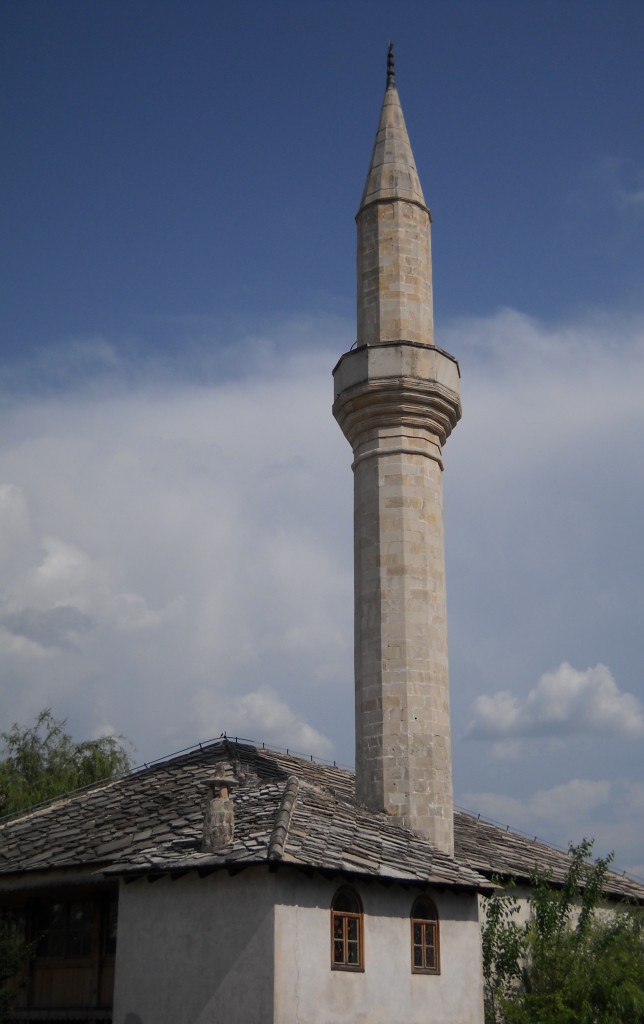
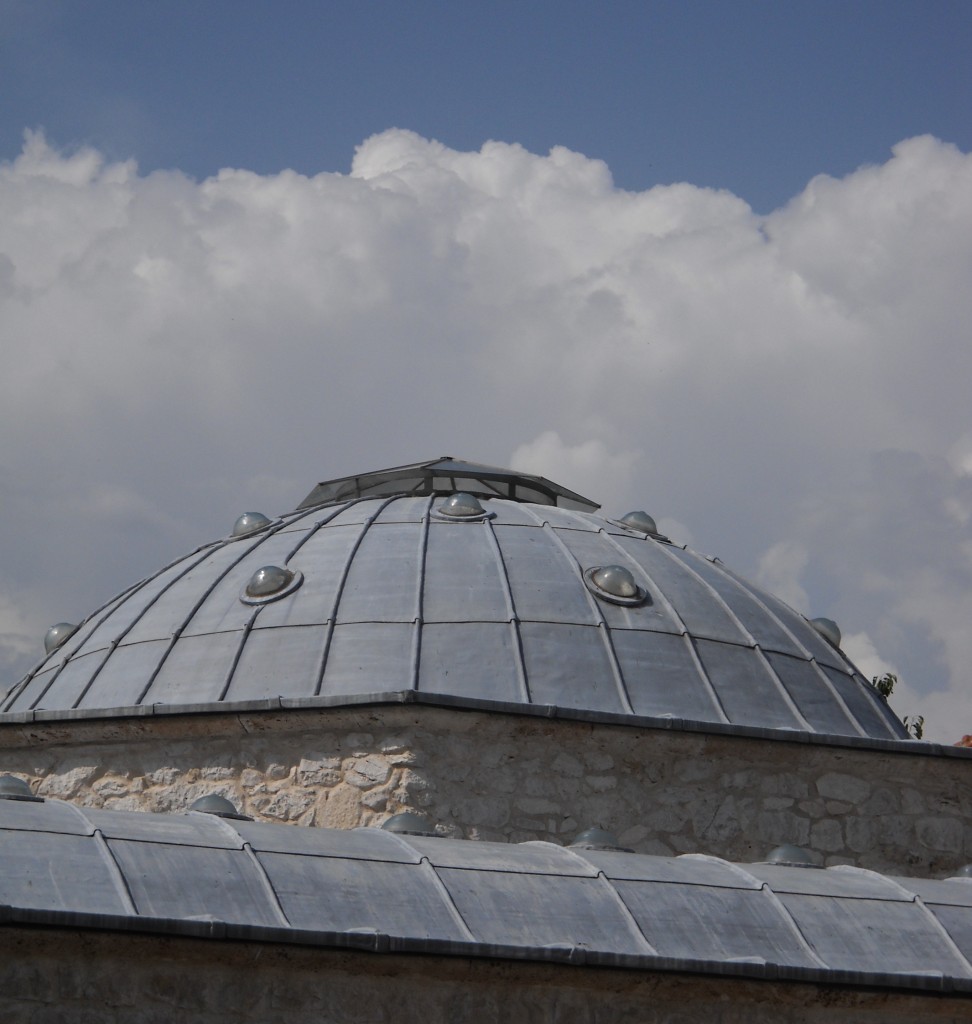
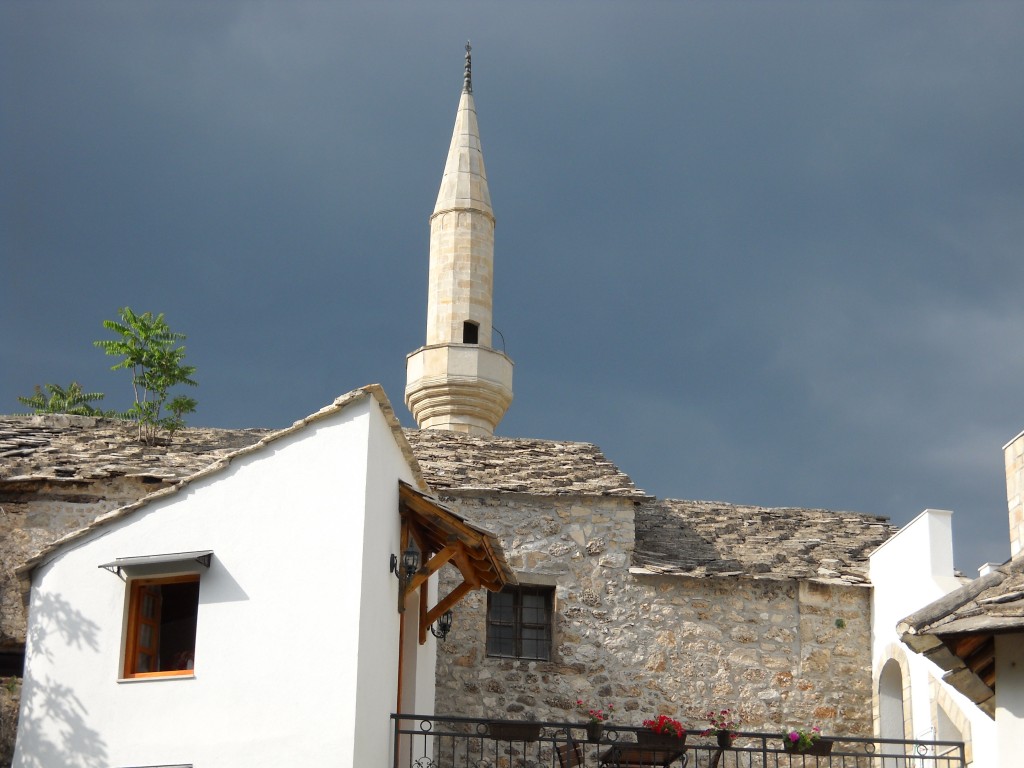
In celebration of these lovely rooftops (any excuse for a party, eh?!), I’m sharing my favorite borscht recipe. I love borscht in any form: hot, sour, savory, sweet. This beauty of a soup is made unique with the addition of juicy apple. Mmmm! Somehow it goes perfectly with the earthy beetroot and has the added bonus of being equally delicious hot or cold. With sunny spring days finally making an appearance, I so enjoy a chilled bowl of borscht topped with soured cream or plain yogurt sprinkled with fresh dill.
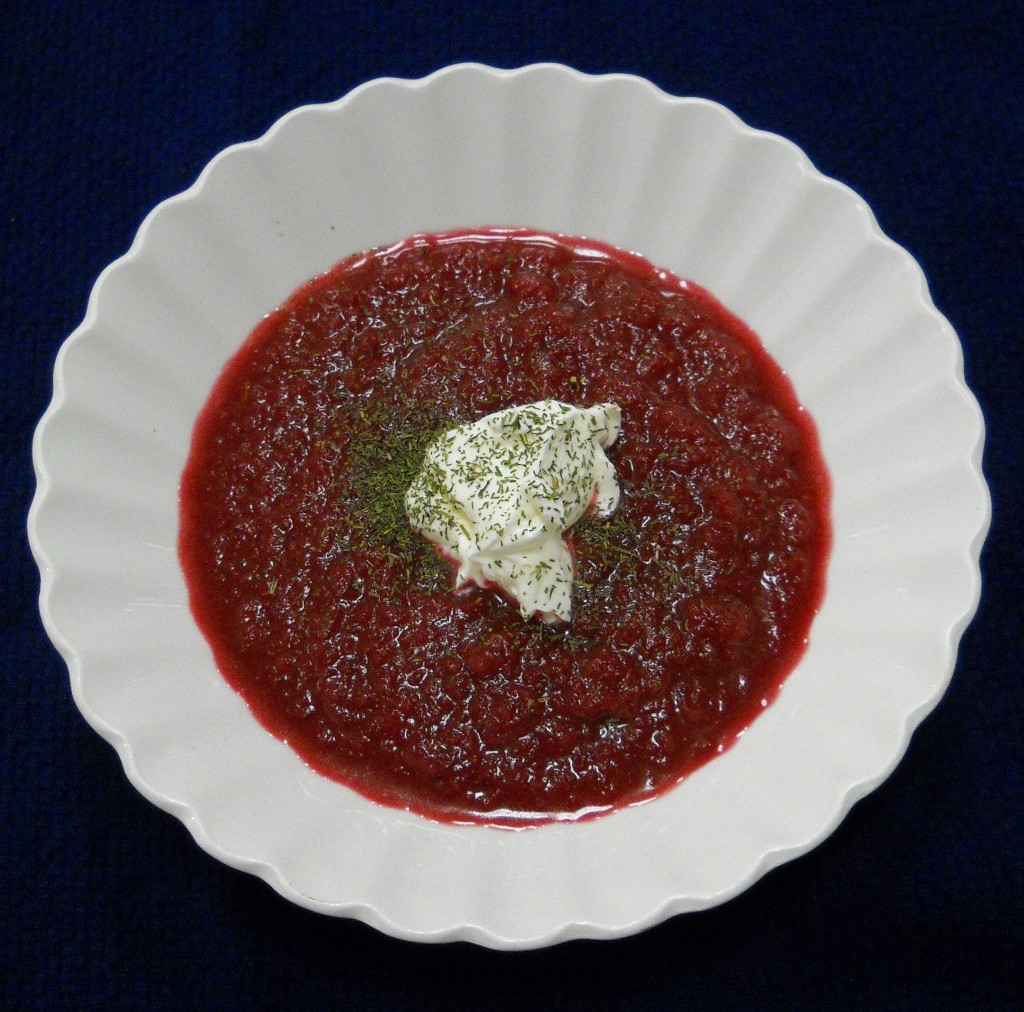
What is your favorite springtime soup?
Borscht with Apples
(Adapted from Soup)
Ingredients:
1 onion, chopped
1 pound raw beetroot, peeled and chopped
2 celery sticks, chopped
1/2 red bell pepper, chopped
1 large cooking apple, chopped
2 Tbsp butter
2 Tbsp sunflower oil
9 cups stock or water
1 tsp cumin seeds
a pinch dried thyme
1 large bay leaf
fresh lemon juice
salt and ground black pepper
Garnish: sour cream, fresh dill
Directions:
- Place chopped vegetables and apple in large saucepan with butter, oil, and 3 Tbsp stock. Cover and cook gently for about 15 minutes, shaking pan occasionally.
- Stir in cumin seeds and cook for 1 minute, then add remaining stock, thyme, bay leaf, lemon juice, and seasoning to taste.
- Bring mixture to boil, then cover pan and reduce heat to gentle simmer. Cook about 30 minutes.
- Strain vegetables and reserve liquid. Process the vegetables i a food processor or blender until they are smooth and creamy.
- Return vegetables to pan, add reserved stock and reheat. Check seasoning.
- Divide into individual serving bowls. Garnish with swirls of soured cream and a frew sprigs of fresh dill.

by Krista | May 18, 2010 | Spring
After our wild drive through the back country of Bosnia and discovering this oh-so-gorgeous lake, we continued to meander through thickly-forested mountains, catching our breath at towering cliffs, turquoise lakes, and pristine rivers cascading through deep, rocky gorges. Although five members of our party were very talkative womenfolk, silence reigned as we gazed in absolute awe and delight at the stunning vistas on every side. I felt that we had stumbled into a magical fairyland. THIS was where giants lived and trolls fought and beautiful maidens spun things in tiny cabins deep in the forest.

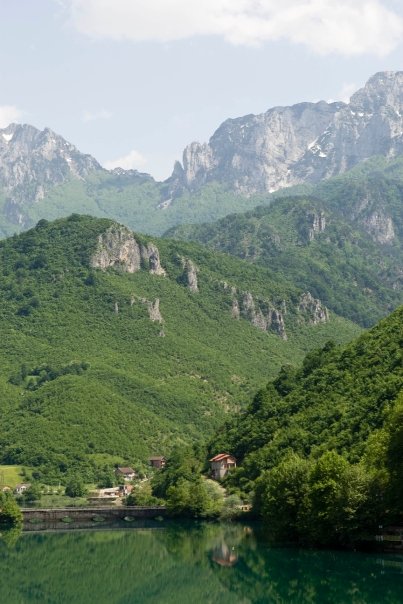
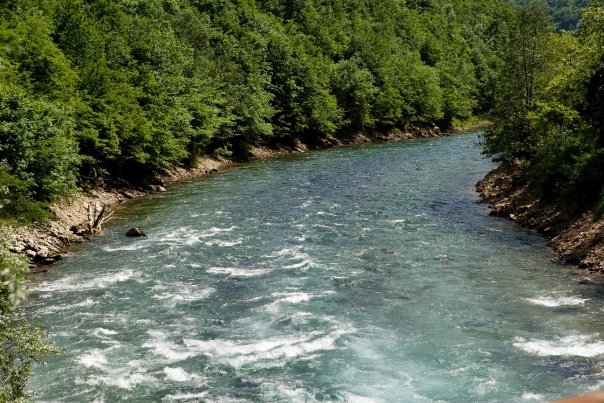
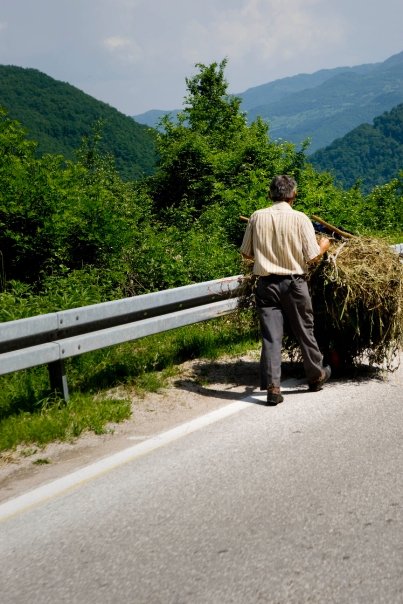
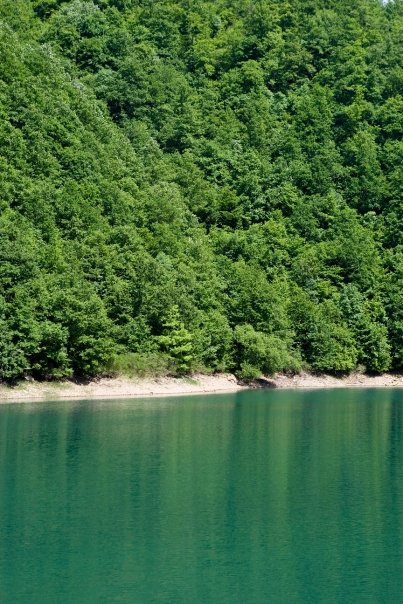
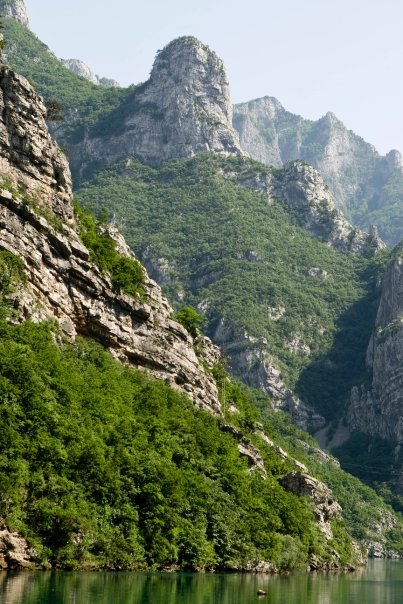
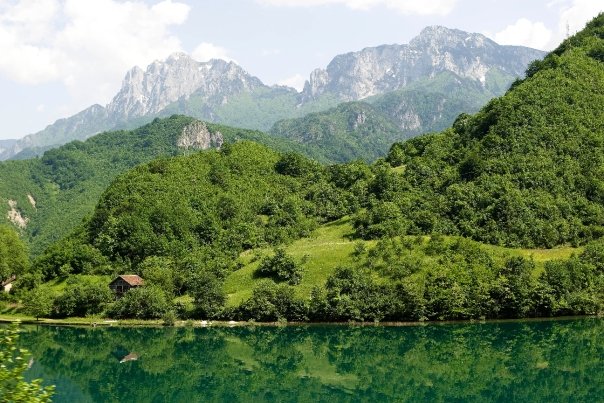
In homage to this beautiful country, I researched some of the exquisite food we ate while we were there, and stumbled upon recipes for a dish I absolutely loved: cevapi.
Looking very much like American breakfast sausages, these lovely morsels are a combination of ground beef, lamb and pork, mixed with onions and garlic, and are served in flat bread or pita and topped with an assortment of condiments depending on the specific Balkan region you’re in.
I did not have ground lamb or pork, so I substituted half a ham. I grated it finely and added it to the beef, mixed in grated onion, pepper, salt, finely minced garlic, 1 tsp of baking soda and an egg white to bind it together. Taking a small handful of meat mix, I molded it into the shape of a breakfast link, repeating until all the meat was used, then covered the cevapi and chilled it for an hour. (The combination is not very wet and must be chilled for at least an hour to allow the flavors to meld and the mixture to bind.) Finally I fried them until they were nicely browned on all sides.
Traditionally they are served on bread with ajvar (a roasted pepper spread), diced onions, diced bell peppers, tomatoes, and sour cream. I skip the bread entirely and pile on the condiments, or simply dip them in grainy mustard for a quick afternoon snack. They are splendid hot or cold. 🙂
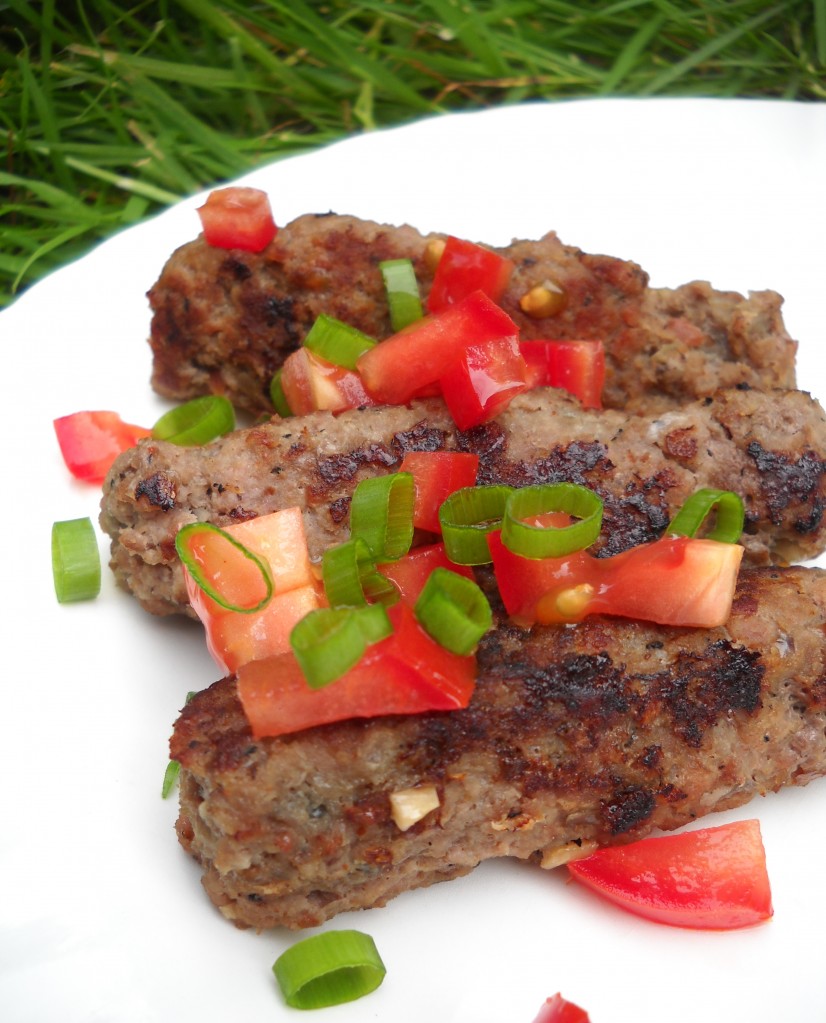
This post has been entered into the Grantourismo HomeAway Holiday-Rentals travel blogging competition.
Rambling Tart version of Cevapi
Ingredients:
1 pound ground beef
2 cups grated ham (traditionally made with 1/2 pound ground pork and 1/2 pound ground lamb)
4 cloves minced garlic
1 red onion, grated
1 tsp baking soda
1 egg white
Salt and pepper to taste (you won’t need much salt at all if you use ham instead of ground pork/lamb)
Flat bread or pita
Toppings: ajar, chopped onion, bell pepper, tomato and sour cream.
Directions:
- Mix everything.
- Mold into breakfast link sized pieces. Chill for 1 hour.
- Fry or grill until browned on all sides.
- Serve with flat bread/pita, chopped onion, bell pepper, tomato and sour cream.

by Krista | May 11, 2010 | Spring
After our hair-raising adventure just over the border into Bosnia, we were delighted to find our road emerge into gentle, rolling hills, some smooth with closely nibbled pasture, others carpeted with thick forests. I was glued to my window, scarcely wanting to blink lest I miss some beauty of this amazing country.
I delighted in the dome-shaped haystacks, shepherds prodding their sheep, children romping in the grass with their dog. I wanted to pull over at every home, magically be able to speak Bosnian, and sit and talk for hours learning about their family and national history. But I couldn’t. All I could do was smile, wave at cute little kids strolling along the highway with sticks over their shoulders, and grin at the dapper old men taking the air in flannel trousers, blazers and hats.
My heart lurched as I saw hillsides covered, absolutely covered in headstones, both Muslim and Christian, women clad in black carrying armloads of flowers. I know every town has a cemetery, but usually the stones are old, covered in lichen, almost hidden by grass, a few new ones noticeable by their glossy marble and fresh flowers.
But not here. Here they gleamed, almost has if they had been erected yesterday. Row upon row of white crosses and black marble pillars. Hundreds of them in tiny mountain towns. My heart ached for the intensity of their loss.
Even as I soberly reflected on the devastation war has wrought on this place, we turned a corner and my heart again lurched, but this time for joy. A jewel of a lake tucked between forested hills, glistening and still, exquisitely reflecting everything around it. We pulled over and just stood there, staring, drinking in the peaceful beautiful of this unexpected place. After a bit some of us clambered down the bank, squelching our way through marshy grasses accompanied by the deafening chorus of thousands of frogs singing their hearts out. We couldn’t see them, but we heard them, and smiled. 🙂




































